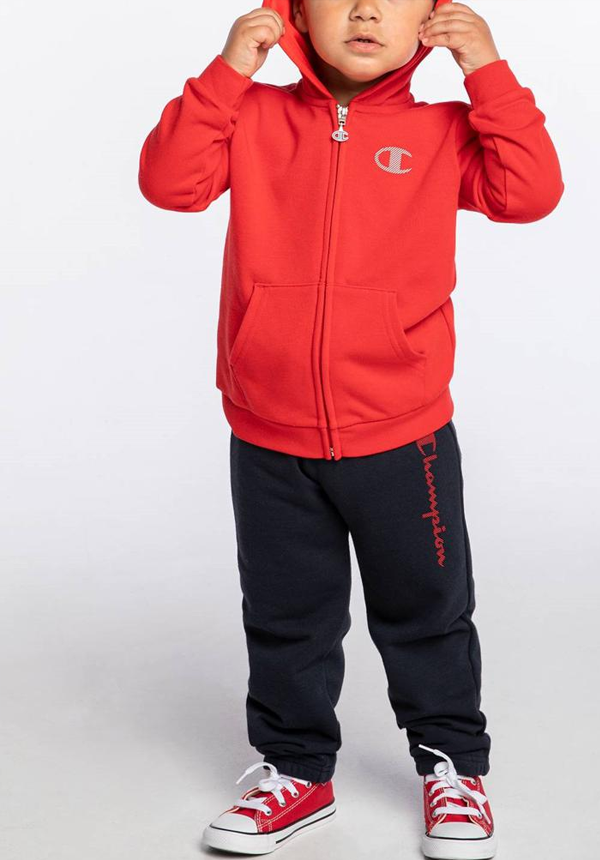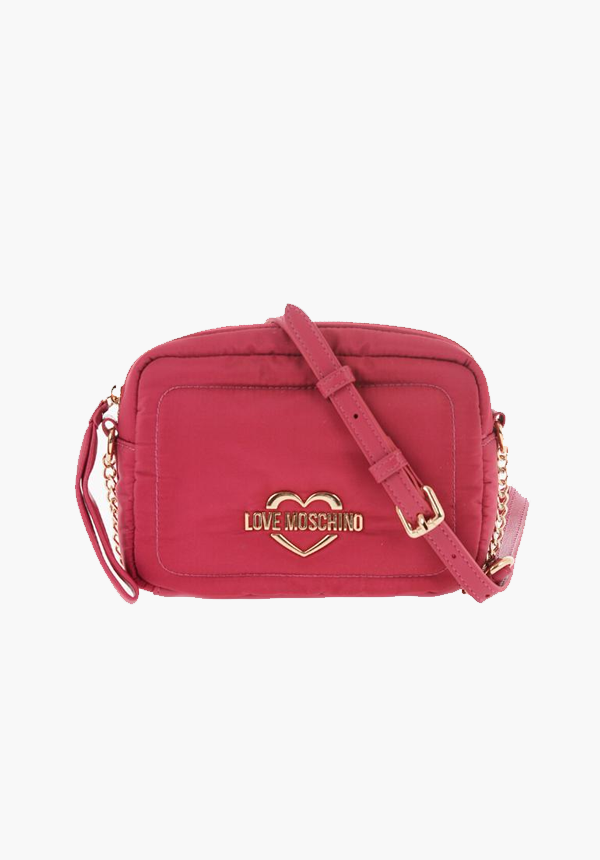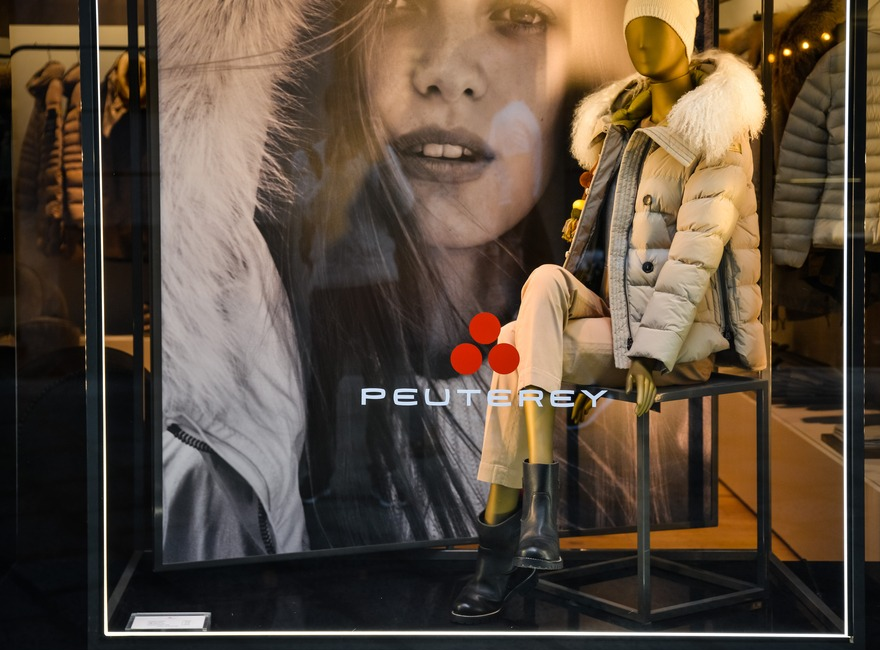.jpg)
1. Start with Your Brand’s Blueprint
Every successful wholesale strategy starts with knowing your brand inside-out. Wholesale isn't just about finding trends—it’s about finding trends that resonate with your customers.
- Who Are You Serving?
Understand your target demographic. Their lifestyle, values, and preferences should inform every wholesale decision. For example, a younger, trend-focused audience may gravitate toward bold, experimental styles, while a professional demographic might lean towards tailored, timeless pieces. Recognising these nuances ensures that your selections connect meaningfully with your customers. - What’s Your Identity?
From minimalist aesthetics to bold statement pieces, your choices should reinforce your store’s narrative, ensuring cohesion across your collection. Consistency in your brand’s offerings builds trust with your customers, encouraging loyalty and repeat purchases. - Visual Storytelling Matters
Your collection is more than just clothing—it’s a visual story. Use your brand identity to guide how items are displayed and marketed in-store or online. A seamless visual experience strengthens your connection with customers and makes your store memorable.
Pro Tip: Use mood boards or customer feedback to pinpoint the key elements of your boutique’s style. This makes it easier to filter potential suppliers and collections.
2. Redefine Quality for Your Market
Quality means different things to different audiences. For some customers, it’s about luxurious materials and flawless craftsmanship. For others, it’s about durability, practicality, or ethical production. Understanding what “quality” means for your specific market is key to making the right wholesale clothing choices.
Checklist for Evaluating Quality:
- Fabric Feel: Does the material meet your customers' expectations for comfort and durability? Is it fit for its intended purpose?
- Construction: Examine the details—are seams clean, zippers sturdy, and stitching even? Well-constructed garments stand the test of time.
- Customer Longevity: Will the piece maintain its shape, colour, and function after multiple wears and washes?
- Supplier Standards: Research the wholesaler’s production processes. Ethical practices and industry certifications add credibility and align with evolving customer values.
- Brand Reputation: Consider the brand behind the product. Is it recognised, trusted, and likely to resonate with your customers?
3. Test the Partnership, Not Just the Product
Selecting a fashion wholesaler is about more than inventory—it’s about reliability, communication, and shared goals.
Evaluate the Supplier’s Strengths:
- Transparency: Are they upfront about lead times, costs, and sourcing practices? Clear communication minimizes surprises and helps you minimise them effectively.
- Reorder Process: Do they have the capacity to scale with you during peak seasons or special events? Flexibility and scalability are crucial for meeting demand without overstocking.
- Customer Support: How quickly and effectively do they handle queries or resolve issues? Responsive customer service indicates reliability and a commitment to the partnership.
- Stock Management: Do they provide real-time updates on low inventory, restocking timelines, or product availability? Proactive communication helps you avoid missed sales opportunities.
- Shipping and Logistics: Is their shipping process efficient and consistent? Delays can hurt your customer satisfaction and brand reputation.
A strong partnership ensures you’re not scrambling to meet demand when it matters most.
4. Stay Ahead of Wholesale Fashion Trends
Wholesale fashion trends evolve quickly, and your inventory needs to strike a balance between staying relevant and offering timeless appeal.
How to Spot Trends That Work for You:
- Attend Trade Shows: These industry events are hubs for discovering emerging trends, new brands, and unique products. Use them as an opportunity to network with suppliers and gauge which styles align with your customer base.
- Analyse Sales Data: Dive into your past sales to identify patterns. Are specific colours, cuts, or styles consistently outperforming others? Use these insights to predict what trends your audience is likely to embrace.
- Leverage Wholesaler Expertise: Partner with wholesalers who provide trend reports or curate seasonal collections. Their insights can save you time and help you focus on trends that align with your boutique’s style.
- Follow Consumer Behaviour: Keep an eye on platforms like Instagram, TikTok, or Pinterest to see what your target audience is sharing, pinning, and buying. Social media often serves as an early indicator of what’s trending in fashion sales.
- Monitor Competitors: Analyse how similar stores are adapting to trends. Are there gaps in their offerings that you can fill?
5. Go Digital for Data-Driven Decisions
Digital tools and wholesale platforms have revolutionised the industry, offering insights into buyer behaviour and inventory trends.
- Leverage Analytics: Use platforms that offer detailed analytics to track which products are selling quickly, which styles resonate most with your audience, and what’s underperforming. This data can guide your buying strategy, helping you focus on high-demand items.
- Virtual Showrooms: Partner with wholesalers who provide digital catalogues or virtual showrooms. These tools allow you to explore collections from anywhere, compare options easily, and make informed purchasing decisions without attending in-person events.
- Real-Time Updates: Use digital inventory management tools to monitor stock levels, manage reorders, and identify trends in demand. This ensures you’re never caught off guard by low stock or missed sales opportunities.
- Predictive Analytics: Some platforms offer AI-powered tools that predict future trends and inventory needs based on historical data. Leveraging these insights can give you a competitive edge by anticipating market demands before they peak.
- Ecommerce Integration: Look for platforms that integrate seamlessly with your online store, allowing you to sync inventory, automate product uploads, and track customer behaviour in real time.
6. Focus on Sustainability as a Selling Point
Ethical practices and sustainable materials are no longer niche—they’re essential. Today’s consumers demand transparency and stocking environmentally conscious wholesale brands can set you apart.
Questions to Ask Fashion Wholesalers:
- Eco-Friendly Materials and Processes: Do they use organic, recycled, or low-impact materials? Do they offer initiatives like off-price wholesale fashion that helps reduce waste by utilising excess inventory?
- Fair Labour Practices: Are their production facilities aligned with fair labour standards? Do they ensure safe working conditions and equitable pay for their workers?
- Certifications: Can they provide recognised certifications for sustainability, such as GOTS (Global Organic Textile Standard), Fair Trade, or BCI (Better Cotton Initiative)?
- Supply Chain Transparency: Can they trace their supply chain to verify the ethical and environmental claims of their products?
- Packaging Practices: Do they use sustainable or minimal packaging for shipments? This detail can make a significant difference in reducing your overall carbon footprint.
Highlighting these efforts in your marketing can attract like-minded customers and bolster brand loyalty.
7. Nail the Numbers: Profitability First
Pricing is more than just numbers—it’s a strategy. Your profit margins depend on choosing the right price points for your audience while maintaining healthy costs for your business.
Tips for Smart Pricing:
- Negotiate Minimum Order Quantities (MOQs): Find wholesalers who offer flexible MOQs that align with your business size and demand. Lower MOQs can help small businesses manage inventory without overextending financially.
- Understand Total Costs: Beyond the base price, assess shipping fees, taxes, and handling charges. These hidden costs can significantly impact profitability if overlooked.
- Leverage Tiered Pricing: Look for wholesalers offering discounts on bulk orders. Tiered pricing structures can help you save on larger purchases, boosting margins while supporting higher stock levels.
- Analyse Market Positioning: Compare your pricing strategy to competitors within your niche. Are you targeting a luxury audience or a budget-conscious demographic? Adjust accordingly to maintain competitiveness while reflecting your brand identity.
- Factor in Markup Flexibility: Build in room for occasional discounts or promotions without sacrificing your profitability. This allows you to stay competitive during sales periods or respond to market demand.
8. Build Relationships That Open Doors
Wholesaling isn’t just a transaction—it’s a network. The right connections can lead to exclusive deals, first access to new lines, and even collaborative opportunities.
How to Build Strong Relationships:
- Stay in Regular Communication: Keep the lines of communication open. Regularly check in with your suppliers to discuss inventory, upcoming trends, and any challenges. Consistent engagement builds trust and demonstrates your commitment to the partnership.
- Attend Industry Events: Trade shows, fashion expos, and networking events are excellent places to connect with current suppliers and discover new ones. Face-to-face interactions help deepen relationships and establish rapport.
- Be a Proactive Partner: Share feedback on styles that perform well and offer constructive suggestions on areas for improvement. This collaboration helps suppliers better meet your needs and fosters mutual growth.
- Showcase Loyalty: If a supplier consistently delivers quality products and services, prioritise them for future orders. Loyal partnerships can lead to preferential treatment, such as better terms or first access to limited-edition lines.
- Collaborate on Promotions: Work with suppliers to create joint marketing efforts or exclusive collections. These partnerships not only strengthen your relationship but also provide unique offerings for your customers.
- Be Transparent About Your Needs: Clearly communicate your expectations, growth plans, and potential challenges. Transparency ensures alignment and helps suppliers tailor their support to your business goals.
9. Test Small Before Scaling Big
Before making large investments in new wholesale fashions, test the waters.
Steps to Mitigate Risk:
- Start with Small Orders: Begin with limited quantities of new items. This approach reduces upfront costs and allows you to evaluate product quality and customer interest before committing to larger purchases.
- Collect Customer Feedback: Use in-store or online surveys, social media polls, and direct customer conversations to gather feedback on the new items. Pay attention to comments about fit, style, and overall appeal.
- Monitor Sales Performance: Analyze how well the test items perform. Are they moving quickly, or are they stagnant? Identify trends in sales data to understand what resonates with your audience.
- Refine Future Orders: Use the insights from customer feedback and sales data to make data-driven decisions. Scale up on the items that perform well and skip those that don’t align with your customer’s preferences.
- Negotiate Terms with Suppliers: Once you identify high-performing items, discuss bulk discounts or preferential terms with your suppliers. This ensures better margins as you scale up.
10. Always Keep Your Customers at the Center
At the end of the day, your success hinges on how well you meet your customers’ needs.
Actionable Takeaways:
- Survey Your Audience Regularly: Use tools like email surveys, social media polls, or in-store feedback to gather insights into customer preferences, including favourite styles, price points, and trends they’re excited about.
- Analyse Sales Data: Track which products are bestsellers and which are slow movers. This data helps you understand customer demand and refine your buying strategy for future orders.
- Rotate Inventory: Introduce new items regularly to keep your store feeling fresh and exciting. Seasonal changes and limited-time collections can create a sense of urgency and keep customers coming back.
- Focus on Personalization: Tailor your inventory to match the unique needs of your customer base. For example, if your audience values sustainability, prioritise eco-friendly collections; if they favour premium designs, stock high-quality branded wholesale clothing.
- Engage Directly: Build relationships with your customers throughpersonalisedd communication. Respond to their questions, acknowledge their feedback, and make them feel valued in every interaction.
- Adapt Quickly to Fashion Trends: Stay flexible and adjust your inventory based on customer feedback and market shifts. Quick responsiveness shows that you’re in tune with their evolving needs.
How Bundlex Helps You Tick Every Box
At Bundlex, we know that choosing the right wholesale partner can transform your retail business. That’s why we’ve built a platform designed to help you tick every box from this guide.
- Curated Quality: Our rigorous quality control ensures all branded wholesale clothing meets the highest standards, from premium fabrics to flawless construction.
- Trend-Forward Wholesale Collections: Stay ahead of wholesale fashion trends with our curated seasonal collections, offering a mix of timeless staples and on-trend designs.
- Flexible Minimum Orders: With a minimum order as low as €250, we make it easy for retailers of all sizes to test collections and manage risk effectively.
- Reliable Partnerships: Transparent processes, real-time inventory updates, and responsive customer support ensure we’re more than just a supplier—we’re your trusted wholesale partner.
- Sustainability Focus: Cater to the growing demand for ethical fashion with our eco-friendly collections, helping you enhance your branding wholesale clothing strategy while reducing your environmental impact.
- Digital Convenience: Our user-friendly platform operates as a virtual showroom with high-quality product visuals and tools to browse, order, and manage inventory anytime, anywhere.
Ready to elevate your wholesale strategy?<a href="/en/support/" target="_blank">Book a call</a> today to discover how Bundlex can help your boutique thrive with collections your customers will love.
Final Thoughts
Wholesale isn’t just about buying. It’s about strategy, foresight, and collaboration. By following this guide, you can confidently navigate the challenges of wholesale fashion, choosing items and partnerships that elevate your brand and satisfy your customers.




